This post may contain affiliate links. Please read my disclosure.
Cured salmon, or cured gravlax is one of the most amazing and incredibly simple recipes you can make. Plus, curing salmon is so easy you'll wonder why you haven't been making it your whole life.
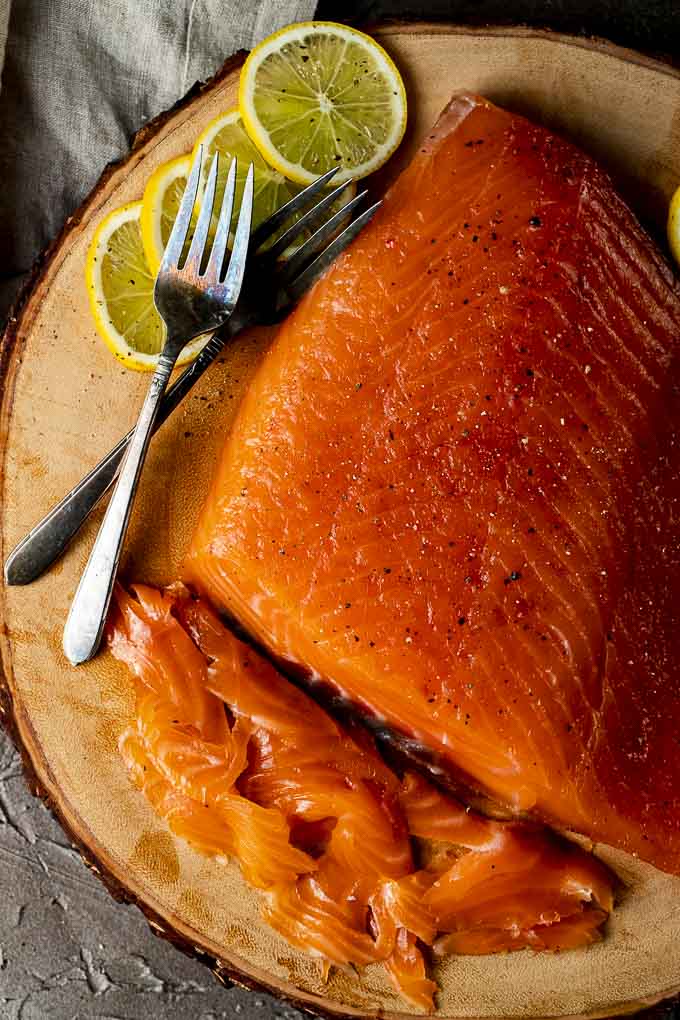
Fresh salmon cured in a mixture of salt, sugar and spices is arguably one of the best things about life...except for MAYBE this cured salmon roe, or ikura.
Just beware, when you cure salmon at home, it's going to disappear fast. And I mean fast. I literally stood over the gravlax for a ridiculous amount of time just cutting piece after piece off and eating it before it was served to anyone else.
When I used to think of cured salmon, I used to think of those fancy brunch spots or those delis serving bagels with lox and cream cheese. (Note lox is basically the same thing as cured salmon). But no more guys....I've got my own bagels with lox and cream cheese, and you can too!!
And did I mention how easy this is to make? Soooo easy!
Jump to:
Is cured salmon cooked?
Cured salmon is not cooked. The salt and sugar used preserve the salmon so cooking is not necessary. Cured salmon is typically cut into thin slices and served raw.
Want to Save This Recipe?
Enter your email & I'll send it to your inbox. Plus, get great new recipes from me every week!
By submitting this form, you consent to receive emails from Went Here 8 This.
The difference between gravlax and smoked salmon
Lox and gravlax are both salt cured, while smoked salmon is, well, smoked. Cured salmon, or gravlax/lox is typically cured in a mixture of salt, sugar spices and sometimes alcohol.
Smoked salmon is typically brined in a mixture of salt, sugar and spices, then smoked in a smoker for many hours (like 10-15 hours). There is also cold smoked salmon, where the smoke from the fire is blown over the salmon from a distance.
Why this gravlax recipe works
- It's ultra easy to make, with only a few ingredients necessary.
- It's so versatile - serve it on anything from a bagel and cream cheese, to fancy party appetizers alongside these Old Bay crab cakes.
- You can adjust the recipe depending on your preference for firmness and saltiness.
- Making homemade cured salmon is far most cost effective than buying it - it costs only a fraction of the amount!
The ingredients
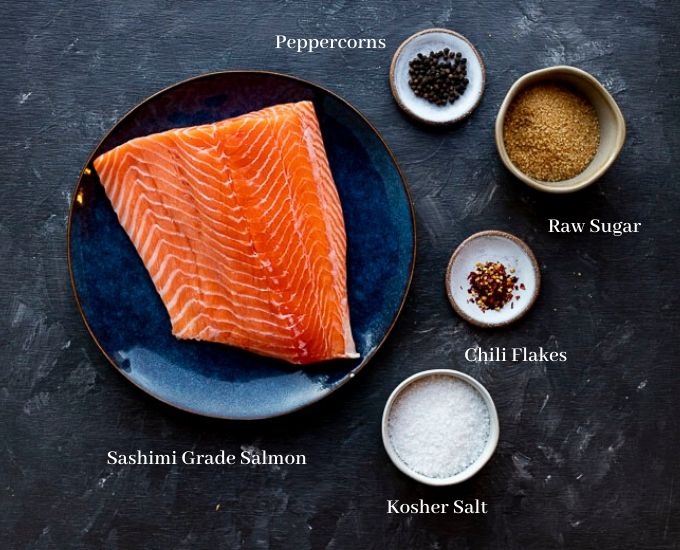
Make sure you are buying sashimi grade salmon, like we do with this sous vide salmon - you want skin-on salmon if you can get it. Most fish markets should carry this. Make sure any pin bones are removed from the fish.
Never use regular table salt for curing salmon - your fish will be WAY to salty!! You want to use coarse kosher salt. Make sure the salt does not contain iodine.
For the sugar, this recipe calls for use of raw sugar, but regular white sugar can be used as well.
Use fresh peppercorns for the best results as well. I use Tellecherry peppercorns, but any kind will be fine.
And I love to add a little crushed red pepper for just a VERY light hint of spice. If you want more spice, add more crushed red pepper, or leave it out if you prefer no spice.
The full list of ingredients can be found in the recipe card at the bottom of the post.
Variations and substitutions
- Rub the surface of the salmon with vodka before adding the cure. The alcohol helps to cure. You can also use lemon juice.
- Add ½ teaspoon of lemon zest to the dry rub to add a citrusy element to the gravlax.
- Add several fronds of fresh dill and/or minced red onion to the sugar and salt mixture.
Step by step instructions
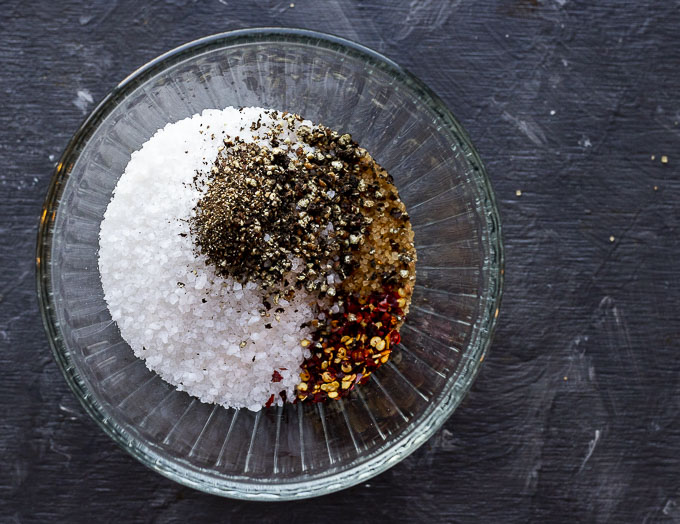
Step 1: First, combine dry seasoning in a bowl and mix to make the cure.
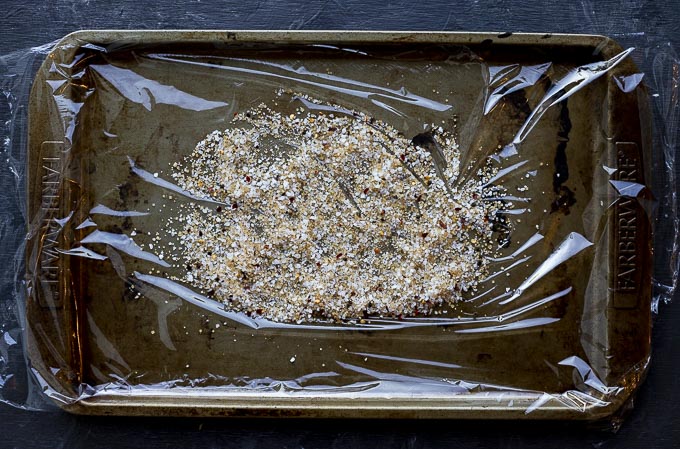
Step 2: Place a large piece of plastic wrap over a large baking sheet. Pour half of the cure onto the middle of the plastic wrap.
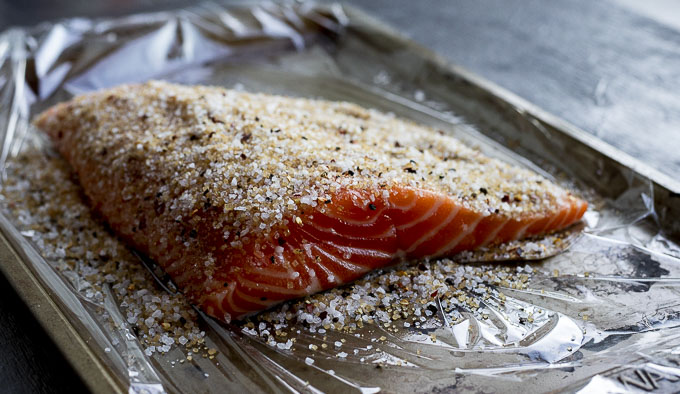
Step 3: Pat the fish dry and place it, skin side down, over the cure on the plastic wrap (make sure bones have been removed from the fish). Pour the remaining cure on the top side of salmon and make sure it covers all parts of the fish.

Step 4: Wrap the plastic wrap around the fish. Cut another large piece of plastic wrap and double wrap the fish. I recommend placing it in a large ziploc bag at this point, leaving the bag open. This helps to catch the juices and makes it easier to drain if necessary.
Step 5: Place the salmon fillet back on the baking sheet and cover it with something flat and heavy. Place in the fridge.
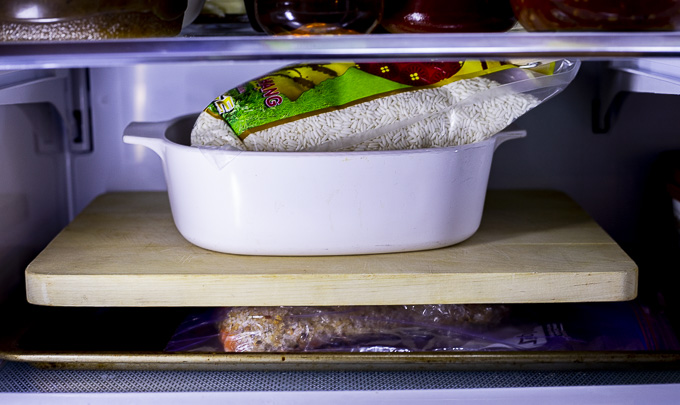
Step 6: **It is important to drain and flip your fish every 12 hours. This helps it to cure evenly.
For a medium cure, refrigerate it for 36 to 48 hours. For a hard cure, refrigerate it for 72 hours. I prefer a hard cure myself. The longer you cure, the more firm and salty the fish will be.
Step 7: Once your fish is done curing, remove it from the plastic and rinse it thoroughly. Pat dry and place it back in the fridge, uncovered, for 12-24 hours. The longer it sits, the better the salt will distribute throughout the fish.
Step 8: Use a VERY sharp knife to thinly slice the fish. Serve with fresh lemon slices and dill if desired. I love it over top of these crockpot au gratin potatoes or these sous vide potatoes with a creamy mustard sauce..
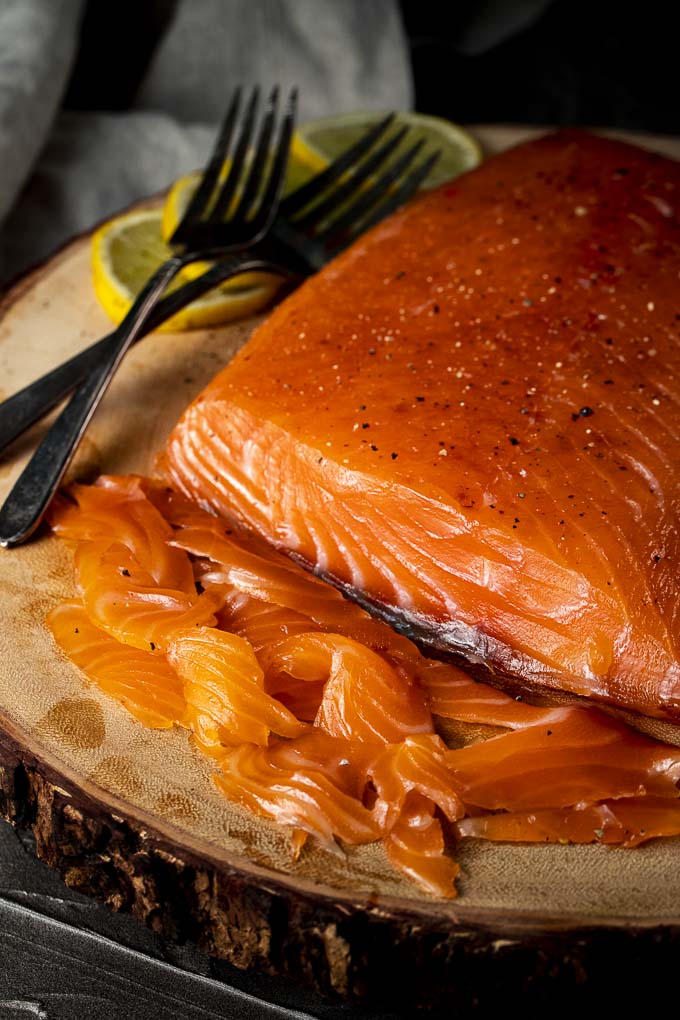
Expert tips
- A sharp knife is a must when slicing the fish to avoid tearing it.
- It is very important to buy sashimi grade salmon for this since we will not be cooking the fish.
- Check the fish for bones and remove any bones that the market may have missed.
- NEVER use regular table salt for the cure. Always use a coarse sea salt or rock salt. Regular table salt will result in a extra salty piece of fish.
- Make sure to use something heavy enough to place on top of the fish while it cures in the fridge. This helps to press the moisture out.
- It is important to drain and flip your fish every 12 hours. This help it to cure evenly.
- For a medium cure, leave it for 36-48 hours. For a hard cure, leave it for 72 hours. The longer you cure, the more firm and salty the fish will be.
- Be sure to fully rinse the salt off the fish, otherwise it will become too salty.
Tips on cure times
Medium cure - this is when the fish is firm, but not too firm. The flavor is less salty than a hard cure, and the fish is still soft and moist. I love to eat medium cure alone, slice by slice, right off the cutting board! Time: 36 hours to 48 hours.
Hard cure - The fish is more firm to the touch, and slightly easier to slice. The flavor is much saltier than a medium cure and is great served on a bagel with cream cheese. Time: 72 hours.
How to use cured salmon
There are so many ways to use this gravlax!
- Dice it up and use it in these sous vide scrambled eggs or omelets
- Use it on bagels with cream cheese or on this bagel breakfast sandwich in place of the bacon or on this goat cheese avocado toast.
- Eat it with toast points and fresh dill with sour cream
- Chop it up and put it with some pasta in a cream sauce - try it in this black truffle pasta (so decadent!)
- On a sandwich or in a salad
- I just like to eat it plain. With a fork.
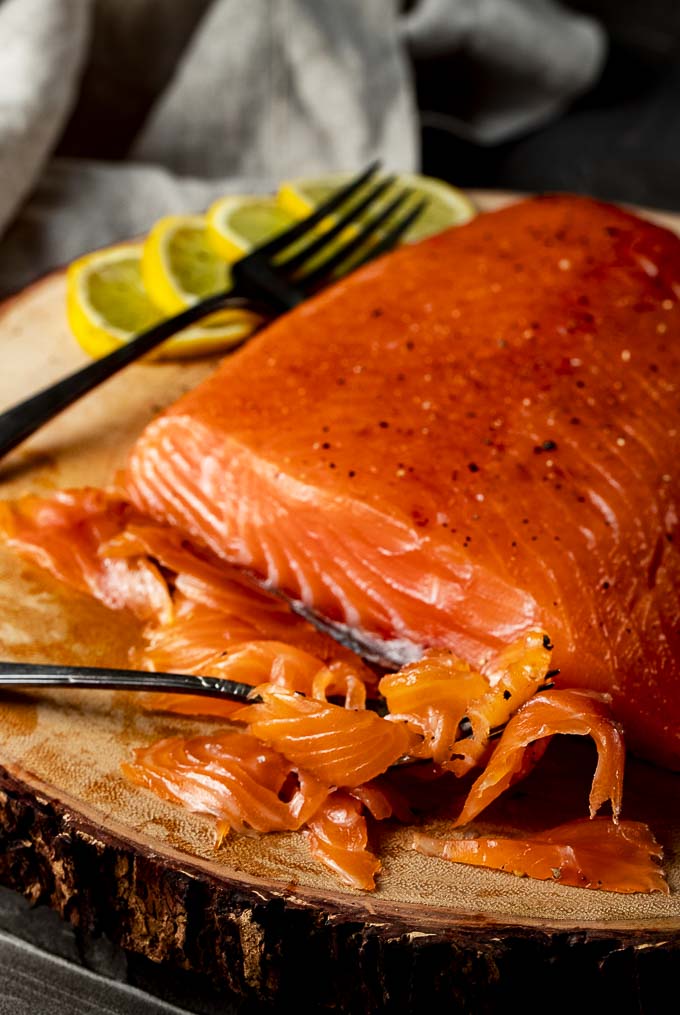
Faqs
Yes, as long as it is high quality salmon. You would likely want to get commercially frozen salmon from your local fish market.
Cured salmon will keep for about 5 days in the refrigerator. If you're making this recipe, I don't think you need to worry about it - it probably won't last that long!
Cut the salmon into the sizes that you want to freeze. For best results, use a vacuum sealer. If you don't have a vacuum sealer, wrap the fish in plastic wrap then seal in an airtight container. Can be kept in the freezer for up to 3 months. To thaw, place in the fridge overnight. Note that the texture will be slightly different than if eaten fresh.
More fancy appetizer recipes
Sometimes a party just calls for a more decadent kind of appetizer. Or just something plain good - but not chicken wings or pig in a blanket (no offense to those guys, they ARE delicious). Just something a little more refined. Like these:
If you love this recipe, please leave a star rating and a comment below and let us know your favorite thing about it. We'd also love to connect on Instagram! Follow us at @went_here_8_this for awesome recipes and all sorts of fun food stuff 🙂
Recipe
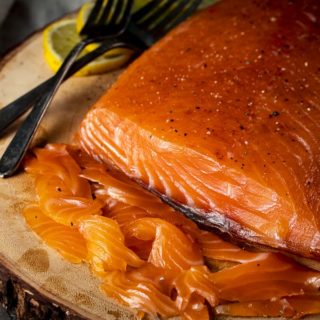
Cured Salmon (Gravlax)
Ingredients
- 1 ½ pounds sashimi grade salmon fillet
- ½ cup coarse kosher salt
- ½ cup raw sugar
- 1 teaspoon coarsely crushed peppercorns
- ½ teaspoon crushed red pepper optional
Instructions
- Combine all ingredients, except fish, in a bowl and mix. Place a piece of plastic wrap down on a baking sheet and pour half the salt mixture on top.
- Pat the fish dry, remove any bones, and place, skin side down, on the salt mixture. Top the salmon with the remaining salt mixture.
- Wrap in the plastic wrap. Layer with another piece of plastic wrap and place in a plastic bag (leave the bag open).
- Place the fish on the baking sheet in the fridge and cover with something flat and heavy.
- Drain and flip the fish every 12 hours for 36-72 hours, depending on desired cure (see notes).
- Remove from fridge and rise all the salt off.
- Pat the fish dry and place back in the fridge, uncovered, for 12-24 hours to help the salt distribute.
Expert Tips:
- A sharp knife is a must when slicing the fish to avoid tearing it.
- It is very important to buy sashimi grade salmon for this since we will not be cooking the fish.
- Check the fish for bones and remove any bones that the market may have missed.
- NEVER use regular table salt for the cure. Always use a coarse sea salt or rock salt. Regular table salt will result in a extra salty piece of fish.
- Make sure to use something heavy enough to place on top of the fish while it cures in the fridge. This helps to press the moisture out.
- It is important to drain and flip your fish every 12 hours. This help it to cure evenly.
- For a medium cure, leave it for 36-48 hours. For a hard cure, leave it for 72 hours. The longer you cure, the more firm and salty the fish will be.
- Be sure to fully rinse the salt off the fish, otherwise it will become too salty.
Nutrition



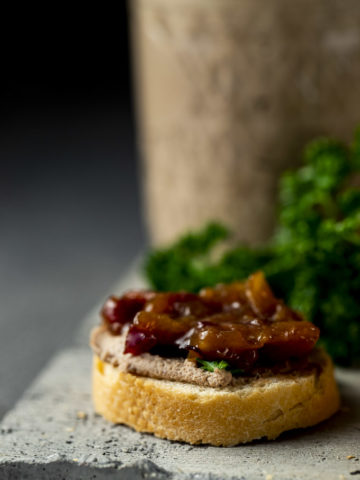





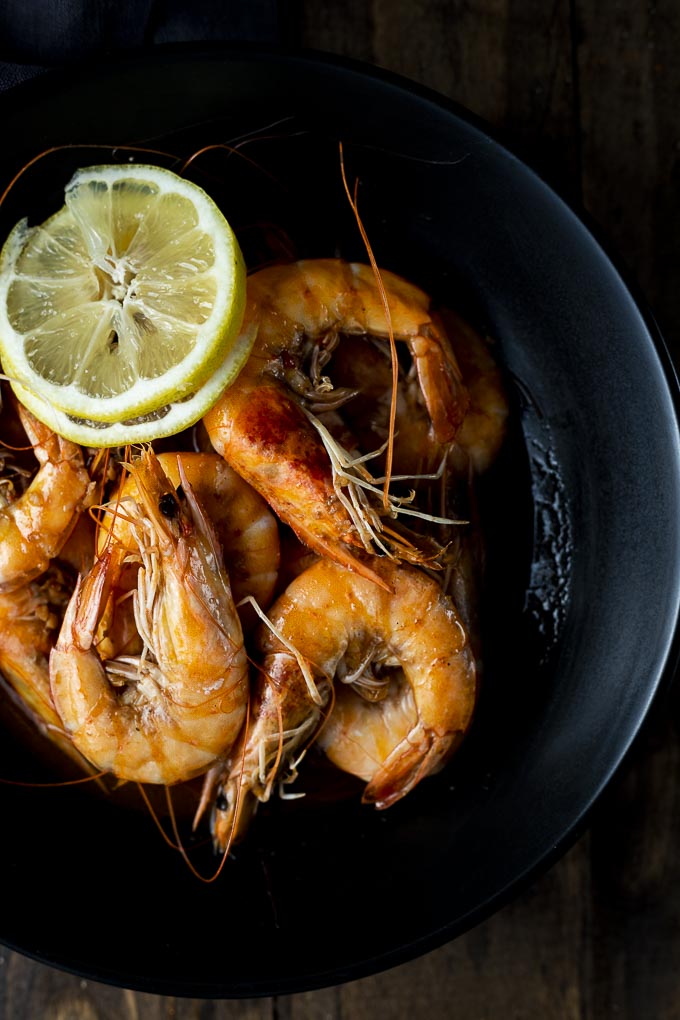

KO
Thanks for the recipe for this Jewish style lox. Mostly one can find it with dill and that is gravlax and it dies not belong on a bagel.
Danielle
You're welcome!
Boiled-swede
Cured salmon recipe, Gravlax
Cuisine:American
I would argue the Gravlax is quite, quite far from “American” “cuisine
“
I hate to be “that guy” but adding pepper and paprika to a dish doesn’t change its roots. Also as a Swede, that’s pretty insulting. Yes you’ve hit a nerve with me.
Alex
Too salty, look elsewhere for a better recipe.
Danielle
Can I ask how long you cured it for and did you rinse it thoroughly after it was done curing?